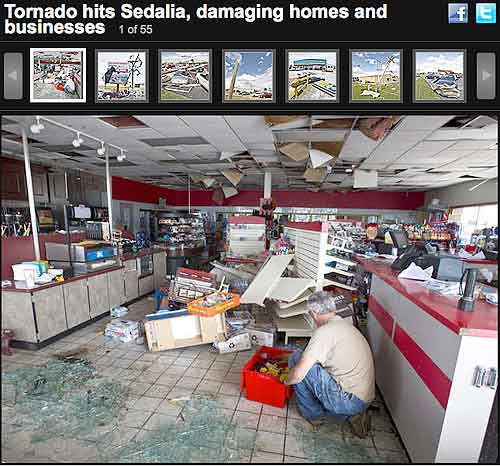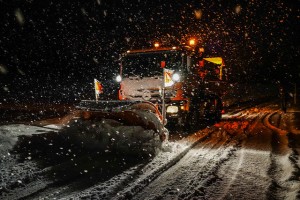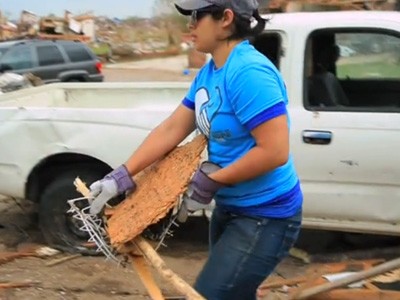Even if your market hasn’t been ravaged by the extraordinary storms this spring – and it seems the number of unscathed regions is shrinking every day – chances are it will feel some economic impact from tornadoes, cold spring weather, flooding or other phenomena.
From crop damage to insurance losses, the deadly twisters likely have inflicted financial damage even in places not suffering the devastating emotional and practical toll of lost lives, homes and businesses. Your readers, barraged with new storm news, likely are wondering how they might be affected.
Higher insurance premiums may be on tap as insurers’ loss reserves are tapped. (And remember that the reinsurers that back the big underwriters already are strained by the claims from Japan’s deadly quakes.) According to this BusinessInsurance.com report, insurers are “reeling” and price hikes are likely. And while most of the insurance business is clustered in financial centers — meaning you likely don’t have the headquarters of any big underwriter in your back yard – they do have to clear premium price increases with state-level insurance regulators.
Now would be a good time to check with your state’s regulator and the National Association of Insurance Commissioners and do a primer on property insurance rates, the mechanisms for raising rates and likely effects of poor weather on premiums in your state. An explainer on the claims process and on federal emergency grant availability also might come in handy for readers.
Meanwhile, adversity always brings opportunity for someone, somewhere, and the cleanup or rebuilding of storm-gutted areas is bound to draw labor and expertise from areas nationwide, as past disasters have. Already, insurance pros are heading to tornado regions to help with claims processing. I suspect waste haulers, demolition experts and eventually builders, construction workers and skilled trades workers will be drawn into reconstruction efforts. Here’s a good article from the Sand Mountain, Ala. Reporter about the cost of debris removal, for example.
You might check with any local companies in those lines of work — or recruiting agencies, placement firms and temporary staffing companies — to see if any local companies are getting a business bump from storm damage or conversely if they are losing talent to the short-term opportunities presented by the tornado damage. It’s happened before.
Building materials suppliers also would be worth checking in on. And the USDA is beginning a review of crop damage; you might check with your state’s agriculture department to see if your region’s produce might be in greater demand as a substitute for any crops lost to storms. An it’s not just plant crops that are affected; poultry losses were high in the earlier round of tornadoes (and the disposal of killed birds posed a problem.)
Weather technology and forecasting as an industry and a career is another good business angle to take. You might ask at state university science departments if any weather instrumentation makers or developers are headquartered in your region; they’d make good profiles. Weather apps developers and sellers of weather radios and other coping equipment are also fair game these days for business features.











